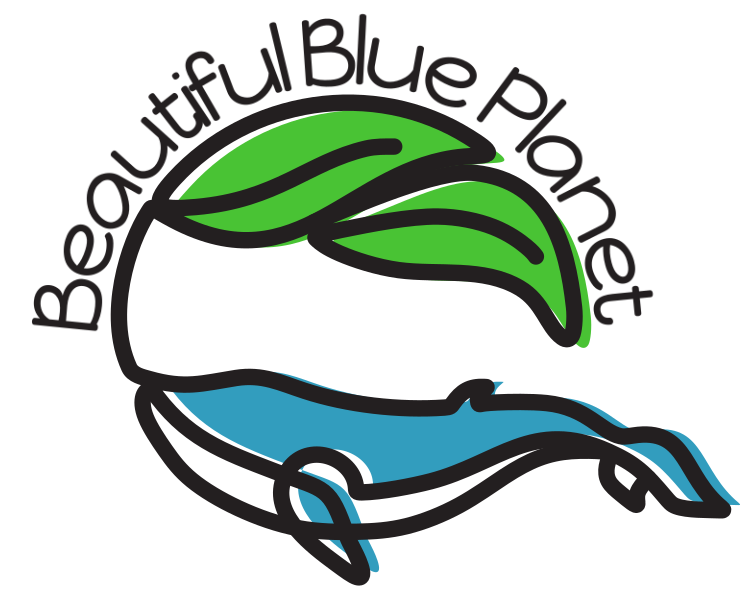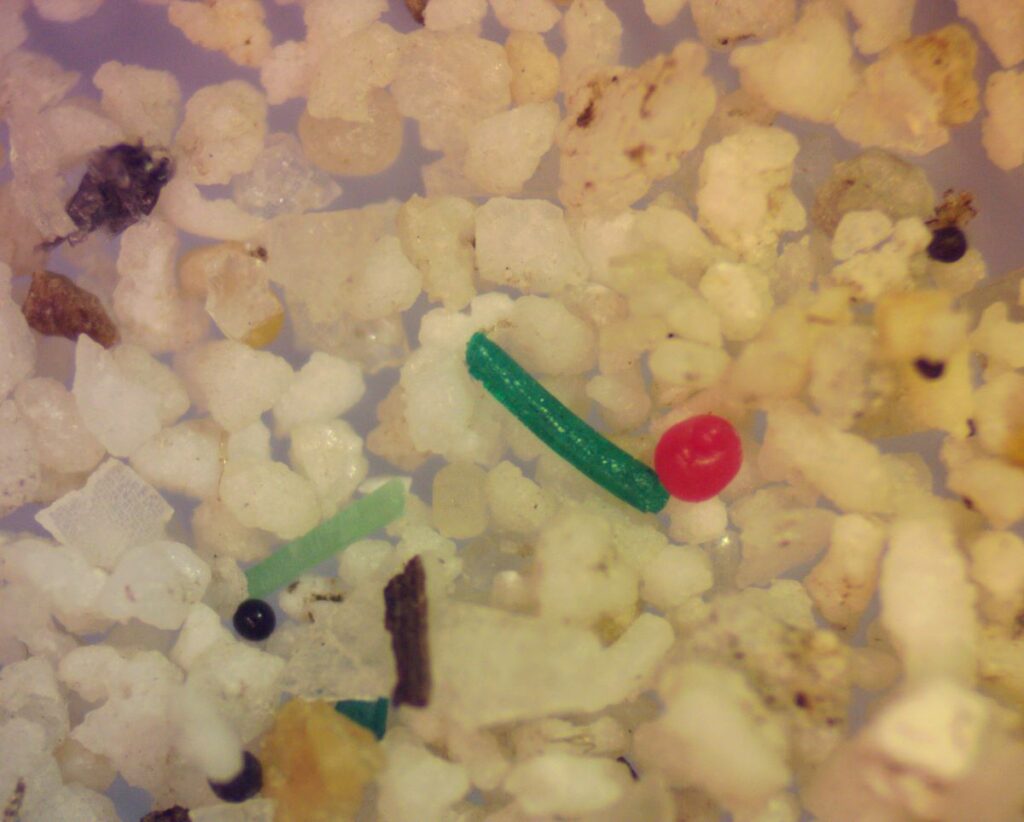Microplastics collected from the environment with the source’s organic matter removed.
Credit: Oof.cc, CC BY-SA 4.0 via Wikimedia Commons
We’re all well aware of microplastics and how they’re everywhere around the planet and how we’re eating them, unwillingly.
But remember that plastic doesn’t biodegrade. It doesn’t return to nature like paper, cotton, or even glass.
It just keeps breaking into smaller and smaller pieces. Which means the smaller they get the more there are.
So, not surprisingly, we have nanoplastics. Nanoplastics are even smaller than microplastics. They’re the result of plastic pieces breaking off into ever smaller pieces.
There are many more nanoplastics
Nanoplastics are so small that we can’t see them. Not even with a microscope.
Microplastics range from 5 millimeters long (less than a quarter inch) down to 1 micrometer (a human hair is about 70 micrometers across).
Nanoplastics are particles less than 1 micrometer long. They’re measured in billionths of a meter. They come in the form of fibers, beads, fragments, and films.
And they’re ending up everywhere. Including in bottled water. They’re much more dangerous than microplastics. And there’s many more of them.
Now we can find and identify them
In 2018 it was found that there was an average of 325 pieces of microplastic in each liter of bottled water.
But scientists have developed new technology to detect the smaller nanoplastics. It involves a special microscope to detect the particles and dual laser beams to identify which type of plastic each particle is.
Then they looked at samples of bottled water sold in the US. They found the smaller nanoplastics and counted between 110,000 to 370,00 nanoplastics in each liter. And they only counted the ones over 100 nanometers in size. Plus, there were microplastics. Read more about the study here in plain English.
Microplastics and nanoplastics are often grouped together and called MNPs.
The problem with nanoplastics
They’re tiny.
Their size is a problem for us and every living thing on this planet. Because the particles can pass through the membranes in our bodies that are there to keep dangerous things out of our bloodstream and our organs.
Nanoplastics are small enough to pass through our intestines and get into our bloodstream. And they’re small enough to pass through our lungs and get into our bloodstream.
Once in our bloodstream they get into our organs like our heart and our liver. They even pass into individual cells.
They pass through the blood-brain barrier.
And they pass through the human placenta and into the developing fetus.
What they do to our organs and our unborn children is new science. We don’t know much yet. But we do know some things.
What we know about nanoplastics and our bodies
The most common way microplastics and nanoplastics enter our bodies is by ingesting them and by inhaling them.
Some early research has strongly suggested increased inflammation of some parts of the body and endocrine disruption from the chemicals that are built into many plastics.
The speed of MNPs passing to mouse brains
A study showed that when mice ate polystyrene nanoparticles, the particles reached their brains within only two hours after consumption. (Polystyrene is what styrofoam cups and take-out boxes are made of, to name a few.) The study’s scientists concluded that “there is urgent need for more research.”
Heart aging
Nanoplastics are everywhere, and they can pass into cells and into organs. A team of researchers discovered a cellular process that leads to heart aging, or heart senescence.
Placenta study
A study on the presence of MNPs in human placentas looked at 62 placentas. Microplastics were found in all of them. Polyethylene was the most common, about 54% of the MNPs. Polyethylene is what most water bottles and plastic jars are made of. It is also polyester, as in clothing. After that was polyvinyl chloride (PVC) and nylon. The study was published in Feb. 2024.
And as mentioned earlier, inhaling MNPs is a way to get them into your bloodstream. There’s a study that found that nanoplastics inhaled by pregnant lab rats were found in the liver, lungs, heart, kidneys, and brains of their fetuses.
Scientists are racing to study the many effects nanoplastics have on us.
Where do nanoplastics come from?
Every single piece of plastic that was ever created is still around. Plastic does not biodegrade; it simply breaks into smaller pieces. So every bit of plastic, unless it’s been burned or is locked away in a landfill, is around to generate microplastics and nanoplastics.
They come from plastic containers, like water bottles, especially when they’re getting opened and closed, and used a lot. Each tiny abrasion or friction from opening and closing plastic containers generates bits of plastic. Remember, if you can’t see them, they’re no less dangerous… they’re even more dangerous.
Clothing and household textiles are a major source of MNPs. Our synthetic clothing doesn’t shed microfibers only when we wash them, as many sources suggest. They shed when we wear them. Every minute we move in them. They shed them into our homes. And we inhale them.
And any plastic that’s been hanging around outside for any amount of time sheds bits. Think of a plastic tarp you may have covering your firewood. It blows around a bit. That abrades tiny bits of plastic. It oxidizes from sun exposure, which makes it brittle and more readily breaks into tiny bits.

Little broken-off bits wash across the soil in the rain. They gather in tiny streams and may end up in a waterway where they can travel long distances. Or they’re easily picked up by breezes and wind and carried long distances in the air. All of which explain why microplastics have been found everywhere on the earth.
And remember, we eat them and we inhale them. These are the main ways MNPs enter our bodies. Our skin keeps them out, but nanoplastics may pass through our thinnest skin and through lesions in the skin.
MNP’s can end up in or on plastic items like bottles and utensils from the manufacturing process, or can leach or break into liquids and food from heat, aging, or squeezing. Every time you open a lid, scrape a butter knife across a plastic peanut butter jar, or even squeeze a plastic bottle, tiny plastic bits can break off and into food, drink, or just into the environment.
Plastics leach contaminants from heat. They break down in heat. And they leach contaminants that they collect while they’re in the environment.
Bottled water was found to have more MNPs than tap water
The study mentioned earlier, which was the first to spot and identify nanoplastics, revealed there are far more microplastics and nanoplastics in bottled water than tap water.
Even when filtered, bottled water has more. Scientists think that’s due to the plastics used in filtering the water!
But much of the plastic found in bottled water is polycarbonate, the plastic used for bottle caps. So it’s believed to be because of opening and closing the cap several times. It comes from the abrasion between the cap and the bottle.
Upshot? Drink tap water instead! And put it in glass or a non-plastic bottle. With a stainless steel lid. Like this one!*
One of the most common MNPs is polyethylene, which is what the plastic bottles are made of, and nylon, which may come from the water filtration. Read more about this study on bottled water and its many nanoplastics here.
And polyethylene is polyester, the most commonly used synthetic fiber in our clothing and household textiles.
How can we keep ourselves safe? And stop the problem?
The better we can see them, the more plastics we find. Plastic just does not go away. So if we’re to keep ourselves and our families safer and healthier, and if we see that we need to stop adding to the problem, what are we to do?
My first suggestions are these:
1. Stop buying and wearing or using clothing and textiles made of any synthetic fibers. No blends, either. Choose natural fibers like cotton, wool, linen, hemp, and silk. And no recycled polyester!! Natural fibers are biodegradable and even far more comfortable and they’re longer-lasting!
2. Drink tap water from a glass. For on-the-go water, use a stainless steel water bottle, especially one with a stainless steel cap and a silicone washer. Like this one. Or this one.*

3. Get yourself a portable bamboo utensil set for when you get take-out food. Try to avoid all plastic containers from take-out foods and even home food storage. (I have a collection of Tupperware… I haven’t parted with that yet, but now that I know more, I’ll start transitioning out of it. 🙁 )
4. Get your coffee to go in your own stainless steel mug* or insulated stainless steel bottle*.
These are the first things you can do. It’s a lot, too! And you’ll have to face flabbergasted looks from the baristas. But the more you do something that’s out of the ordinary but makes sense, the quicker your changes will rub off and change everyone else.
Because, as I said earlier, the plastics we have now aren’t going away, ever. We need to stop adding more. For our children.
Every child you see, know that you’re doing it for them.
*This post contains affiliate links, so I may earn a small commission if you buy something from these links. This helps enable me to research and create useful content for you.
Related Reading
Why Recycled Polyester is Worse for the Planet
Natural Fibers vs. Synthetic Fibers, Which are Better and Why
Just Stop Wearing Plastic Clothes
Plastics in Oceans: They’re in Every Corner of the Earth
Wool IS an Eco-Friendly Fiber–You Just Need to Choose it Well

